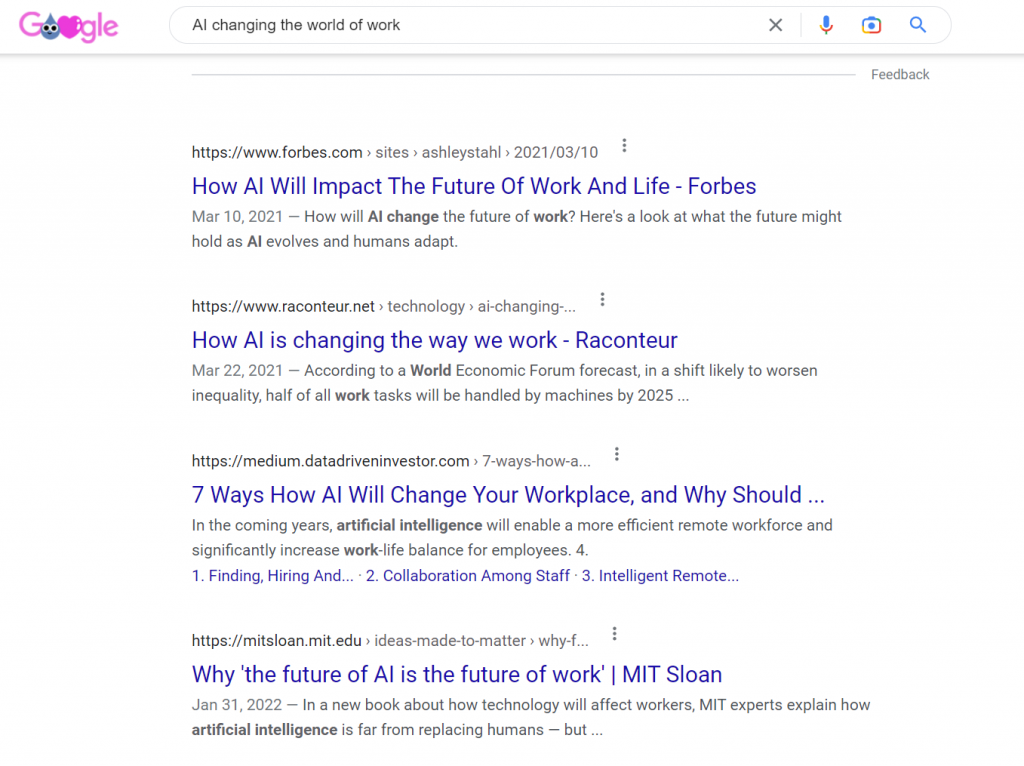How to Use ChatGPT for Science Communication

Unless you’ve been living under a rock (which actually seems somewhat reasonable these days), you’ve probably heard about the AI’s [artificial intelligences] that are changing the world of work. A simple Google search brings up a number of results from across the media landscape. Questions are validly being raised about how the media & creative economies will be affected by these technological advances. And, indeed, one might question where science communication might stand in this new age of robot-written articles & computer-created content.
But, instead of focusing on dystopian possibilities, let’s consider how AI can be used as a tool to better science communication. Specifically, how can those who work professionally in science communication use a tool like Chat GPT for scicomm?
Some of the latest tools to enter the communications landscape (to a massive amount of hype and controversy) are natural language machine learning algorithms based on large language models. These are systems trained on massive databases of text documents and websites, using programming that allows them to learn & predictively apply the rules of communication. ChatBots were among the first of these tools to begin popping up on websites several years back that could answer simple questions about whatever platform they were programmed for. Microsoft’s “Clippy” is a very early example of the attempts to breach the divide between computers and people.
Now, people are excited about a new world of possibilities that has opened up thanks to a system called ChatGPT from Openai. While many might call it “an AI”, whether it’s really an artificial intelligence is debatable. As a natural language machine-learning algorithm it has certain bounds that limit its functionality, and many people would like to reserve the term AI for those systems that come later with more human-like intelligence. Google and Bing have also released their own versions of these advanced chatbots as they see their dominance in internet search threatened by the ease of interacting with the ChatGPT system.
None of these systems is perfect. They make lots of mistakes, and unlike scientists don’t cite their references. In fact one recent query to ChatGPT by a scientist looking for research on a particular topic resulted in a list of fabricated research articles. In fact, paper abstracts are convincing enough to fool researchers into thinking they might be real. ChatGPT didn’t have the information, so it made up very convincing lies. This result doesn’t bode well for the use of this kind of tool in science or science communication.
However, there are ways that ChatGPT can be used to benefit your science communication efforts:
- Searching for information – while chatGPT-3 is limited to information on the web prior to 2021, because it uses natural language, it is a very smooth interface for search. However, user beware. Information from these searches needs to be double-checked for accuracy. Human expertise is still more valuable
- Creating age-appropriate summaries of complex topics – enter a topic into the chatGPT interface with the request for age-specific wording, and chatGPT will spit out text modified to fit your query. Of course, these results are just a starting point for you to be able to apply your personal storytelling & writing skills, but can be a helpful tool in your process.
- Science writing – if you ever find yourself suffering from writer’s block, a quick query into chatGPT will return text that can be used to spark insights that get your writing process running. Alternatively, you might use chatGPT to help outline ideas that are bouncing around your brain.
- Social media – chatGPT can help formulate or template post ideas for the various social media platforms. Requesting help for advertising events makes creating multiple posts go much faster for the scicomm social media manager. Need a TL;DR? ChatGPT has you covered.
- Sentiment analysis – often in scicomm we struggle to determine how our work is received, and evaluation needs to become a more central component of our comms efforts if we are to improve effectiveness. ChatGPT can perform basic sentiment analysis on bit of text, which can speed up your evaluation & iteration process.
These are just five possible uses for the ChatGPT text algorithm to benefit science communication efforts, but the possibilities are even bigger. Human creativity will open the doors to the many ways this tool can be used. Are you using ChatGPT? How is it helping you become a better science communicator?

Recent Comments